
7 minute read
Attracting Hummingbirds
As fast and tiny as they are, hummingbirds can be hard to get a good look at sometimes. This one has a drop of feeder nectar at the end of its beak.
Tips for Feeding Everyone’s Favorite Tiny Fliers
Story and photos by David Cook
fter the long, dreary days of late winter and early spring, getting back into the garden is a priority for many of us. And while we anxiously scan the ground for bits of green pushing through the dirt, there’s another aspect of gardening which is equally anticipated – the return of hummingbirds and other pollinators.
While the focus of this advice may lean toward attracting and feeding hummingbirds, any experienced gardener will know that what attracts hummingbirds will also likely attract other important pollinators, namely bees and butterflies.
GETTING STARTED
Hummingbirds are eager eaters needing a near-constant supply of nectar, so when they find a steady source of food, they’ll happily make the area part of their daily routine. They’ll often visit several times a day, going from flower to flower, and flower to feeder. Butterflies tend to be more erratic in their feeding patterns, but bees will make several return visits to their favorite flowers throughout the day, much like hummingbirds.
Molly Blogg, manager of Hornbaker Gardens, enjoys the perk of working in a hummingbird-friendly environment. Located just outside of Princeton, Hornbaker Gardens features an impressive collection of several hundred varieties of flowering plants, trees, and shrubs. The idyllic area has many hummingbird favorites – a bounty of blooms, plenty of shade, beautiful display gardens, ponds, a waterfall, fountains, and birdbaths.
“We see a lot of them out here. It’s exciting seeing them flit in and out,” Blogg said one early spring morning as she helped begin the process of waking the gardens from their long winter’s nap to prepare for the upcoming season’s business.
While planning your garden, it’s best to keep in mind that each type of flower has a limited time to bloom, so it’s helpful to choose varieties that will pop at different times throughout spring, summer, and early autumn.
Hummingbirds, as well as bees and butterflies, tend to favor flowers in reds, blues, and purples, but they’ll also eat from flowers of other colors if they need the nectar. The shape is another consideration, as hummingbirds love long, tubular flowers and clusters of tiny blooms.
See BIRDS page 14
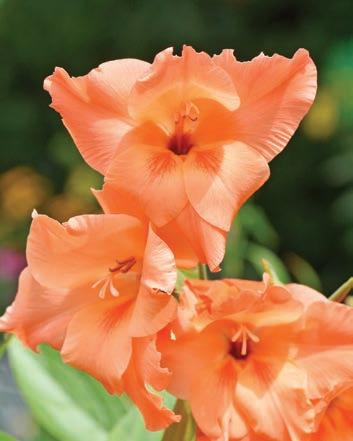
The bright, deep red of these Dolly Madison lilies, as well as other Asiatic lilies, are popular with hungry hummingbirds. Gladiolas, along with many other types of flowers, are available in a wide range of colors and are both beautiful and popular with hummingbirds. Hollyhocks are a traditional favorite and are available in every color from white to black. They add a vertical boost of color to gardens, do well in narrow areas or along fences, and are popular with pollinators.

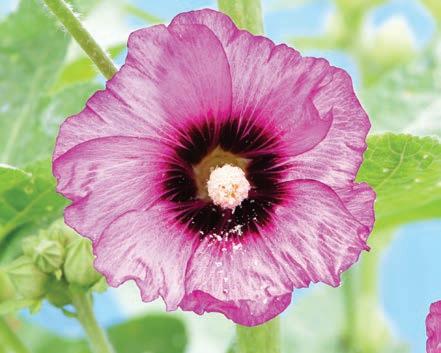
Birds
FROM PAGE 13
SOME FAVORITE FLOWERS
Bee balm is an easy to grow, long-blooming perennial known to attract all pollinators. The red and purple variations are the best bet in regards to catching the attention of your local hummingbirds. They do well in both sunny and partially sunny locations and thrive in moist areas like other plants in the mint family. Lemon balm is a similar variation of balm that’s also enjoyed by pollinators.
Hollyhocks are a great addition to any garden as their tower of flowers makes it easy for hummingbirds to safely hover in place as they feed. Their height also adds a vertical splash of color to areas filled with low-growing plants. Available in various colors, hollyhocks are a clas-
Buddleia, commonly known as Butterfly Bush, is seen here with an Eastern Tiger Swallowtail. Pollinators love the late season, long-lasting and showy blooms, and these striking bushes are available in several colors, including white, yellow, and purple.
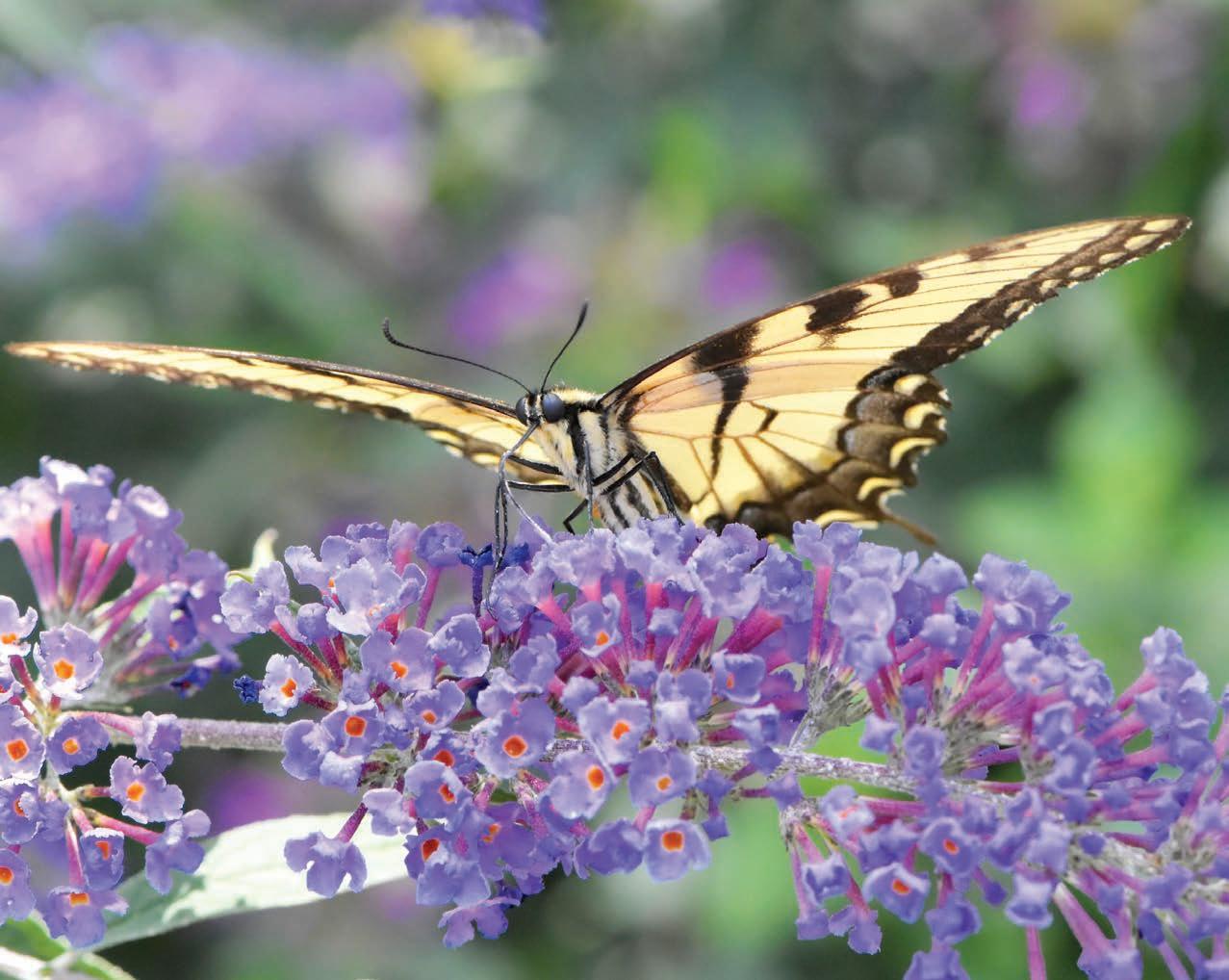
sic addition that will be popular with pollinators and people alike. They’ll both reseed themselves and occasionally come back from the root.
“They really like Lobelia (cardinal flower); it’s tubular and bright red. Hummingbirds are attracted to plants with sweet nectar and are good at sourcing them out,” Blogg said, adding that digitalis (FoxGlove) and phlox were also popular with the tiny birds.
“You want to plant large masses of color, five to seven or more. They’ll notice that more than if you just plant one here, one there,” she advised.
Buddleia (butterfly bush) is a late bloomer with long-lasting spikes of beautifully scented flowers in a wide range of colors, including purple, yellow, pink, and white.
“Another one they like that people often don’t think about is the hosta flower. We’ve got more than 400 varieties, so they like some more than others, but to keep them visiting your garden, it’s good to have a variety of plants blooming throughout the season with different colors and textures,” Blogg said.
Other flowers that hummingbirds will happily visit include salvia, sage, lavender,

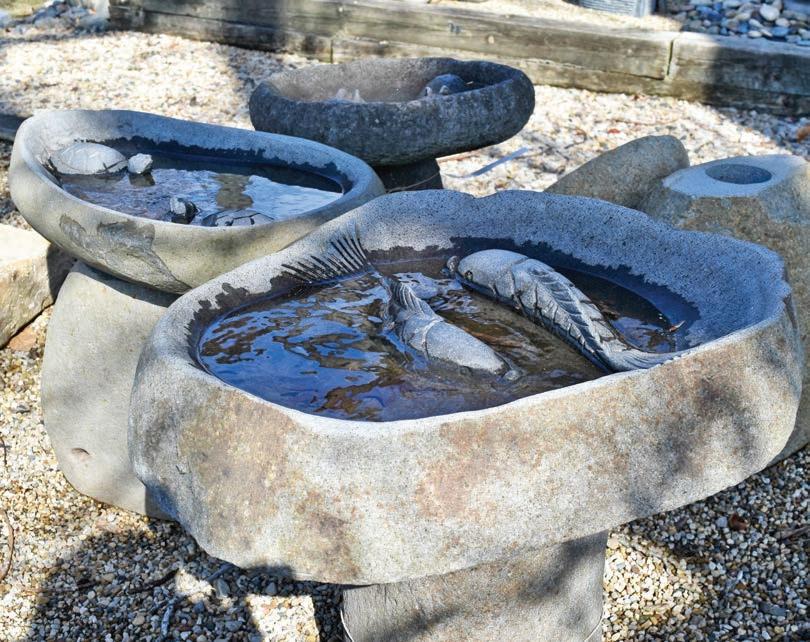
This bumblebee, like all pollinators, enjoys this mint and anything else in the mint family, including bee balm, lemon balm, catnip, and others.

lilies, azaleas, gladiolas, lupines, four o’clocks, irises, petunias, and more.
FEEDERS
A feeder can be a great way to initially attract hummingbirds, as well as help supplement their food supply during gaps between flowers blooming or if there is a lot of competition for the nectar. It’s not uncommon to see multiple hummingbirds hovering near feeders. They can also be a way to bring nature a bit closer if garden space is limited or unavailable and there are a variety of styles available in decorative designs and colors.
“The most important thing is to keep the sugar solution fresh, swapping it out at least once a week,” Blogg said.
Hummingbird food is available commercially, but Blogg said it’s easy to make at home with a 4 to 1 ratio of water to sugar and that it can be stored in your refrigerator.
OTHER CONSIDERATIONS
Water is essential to every animal, hummingbirds included. Incorporating a water feature, even a simple birdbath, can be one of the most beneficial additions to your garden if you hope to attract more natural visitors. Hummingbirds will bathe and drink like other birds, but they prefer moving water such as that produced by a fountain, mister, or gentle spray.
Hummingbirds are initially shy around people. But with patience, they’ll become more comfortable approaching your feeders and flowers once they know you’re not a threat, and you may soon find yourself with a number of tiny, hovering, and fast-flying new friends.
WHERE QUALITY, FRESHNESS, AND SERVICE IS GUARANTEED!

1102 Meriden Street • Mendota 815-539-9341
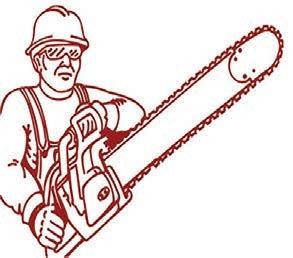
SM-LA1966006


JD&JaniceSmallwood

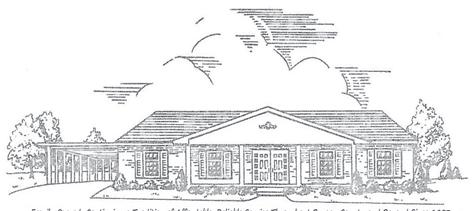

FamilyOwned,ContinuingATraditionOfAffordable,ReliableService ThroughoutBureauCounty&BeyondSince1903


ReadersChoice Awards 2021,2020,2019,2018, 2017&2016VotedMost RespectedFuneralHome
Funerals • Cremations Pre-Arrangements Monuments Caskets • Urns&Jewelry

www.norbergfh.com Korte and Turpen Tree Sevice
• Tree Removal • Stump Removal • Trimming
• Topping • Cable and Bracing • Firewood for Sale •Snow Removal 2133 Meadowlawn Lane 2133 Meadowlawn Lane Peru, IL 61354 Peru, IL 61354
815-579-8476 FREE ESTIMATES LICENSED
INSURED
FINANCE UP TO 95%
Welcome Home.
Ownership Advantage Mortgage Can Open the Door for You!
Mortgages held locally by FPCU Mortgages held locally by FPCU Payroll deduction offered Weekly or bi-weekly payments No prepayment penalties No mortgage points
Federally insured by NCUA NMLS #609452
Take advantage today. Contact us for details!
financialplus.org


